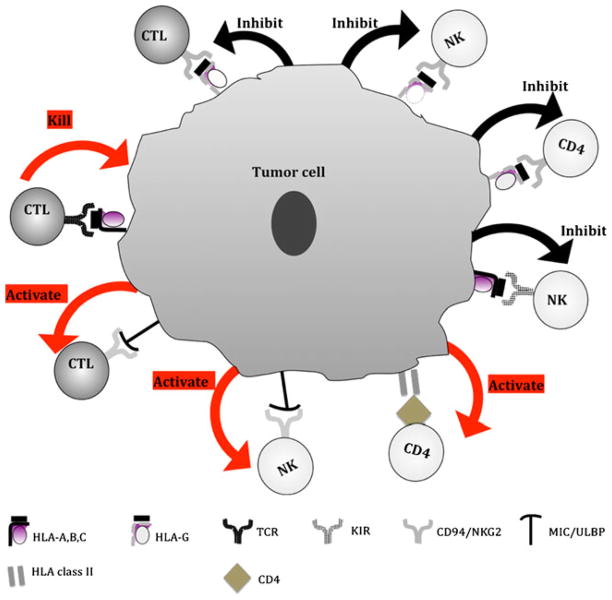Fig. 1.
Molecular mechanisms underlying the functional properties of HLA antigen and NKCAL expressed by malignant cells. Once the classical HLA class I-β2m-peptide complex is transported to the plasma membrane, it plays a major role in the interactions between target cells and (a) activation of peptide-specific CTL through TCR; and (b) inhibition of T-cell subpopulations through inhibitory receptors KIR. In contrast to classical HLA class I antigens, the non-classical HLA class I antigens, HLA-G, inhibit CTL, CD4(+) T cells and NK cells through their interaction with the NK cells receptor CD94/NKG2. HLA class II expression by tumor cells may be potentially beneficial to TA-specific immune responses through their interaction with CD4(+) T cells, resulting in the activation of CD4(+) T-cell-mediated killing, macrophage through release of Th1 cytokines; B cells and eosinophils through release of Th2 cytokines, and CTL through release of Th1 cytokines

